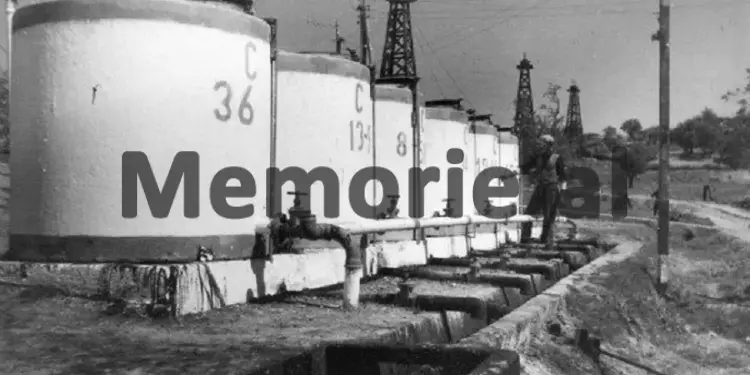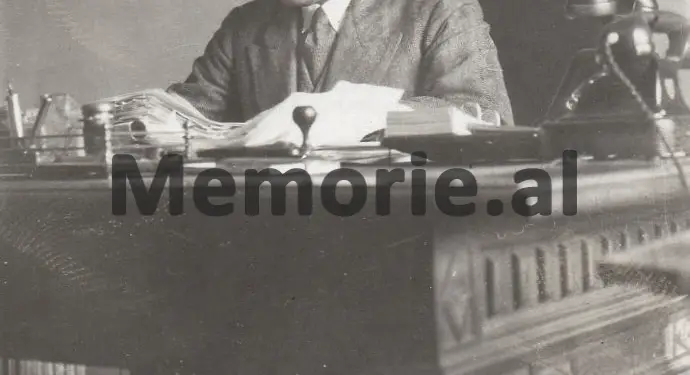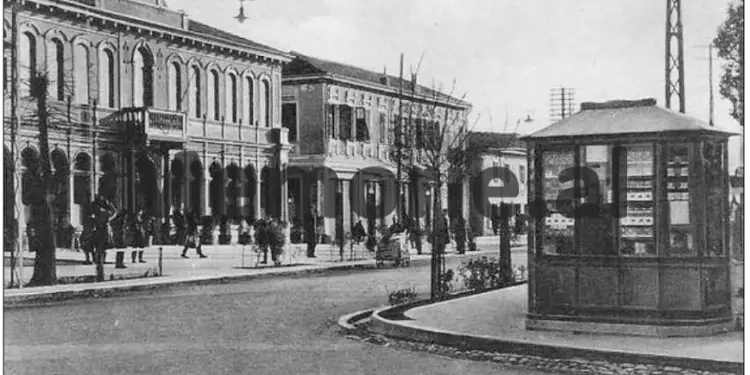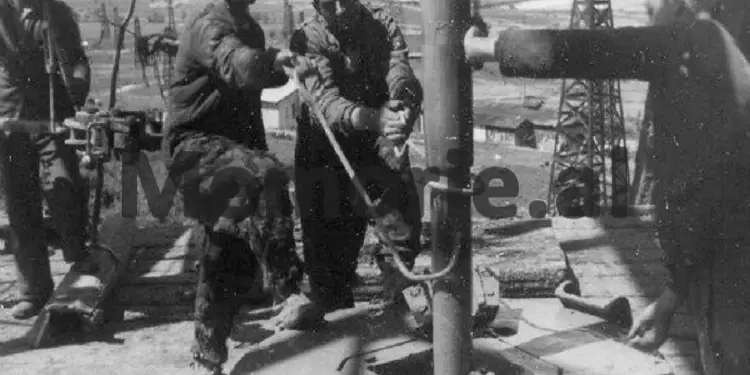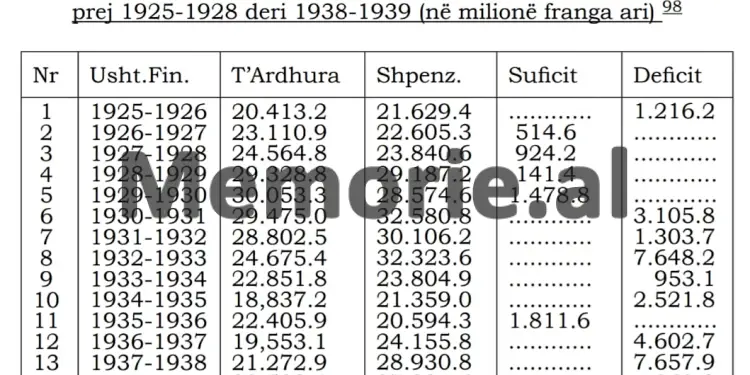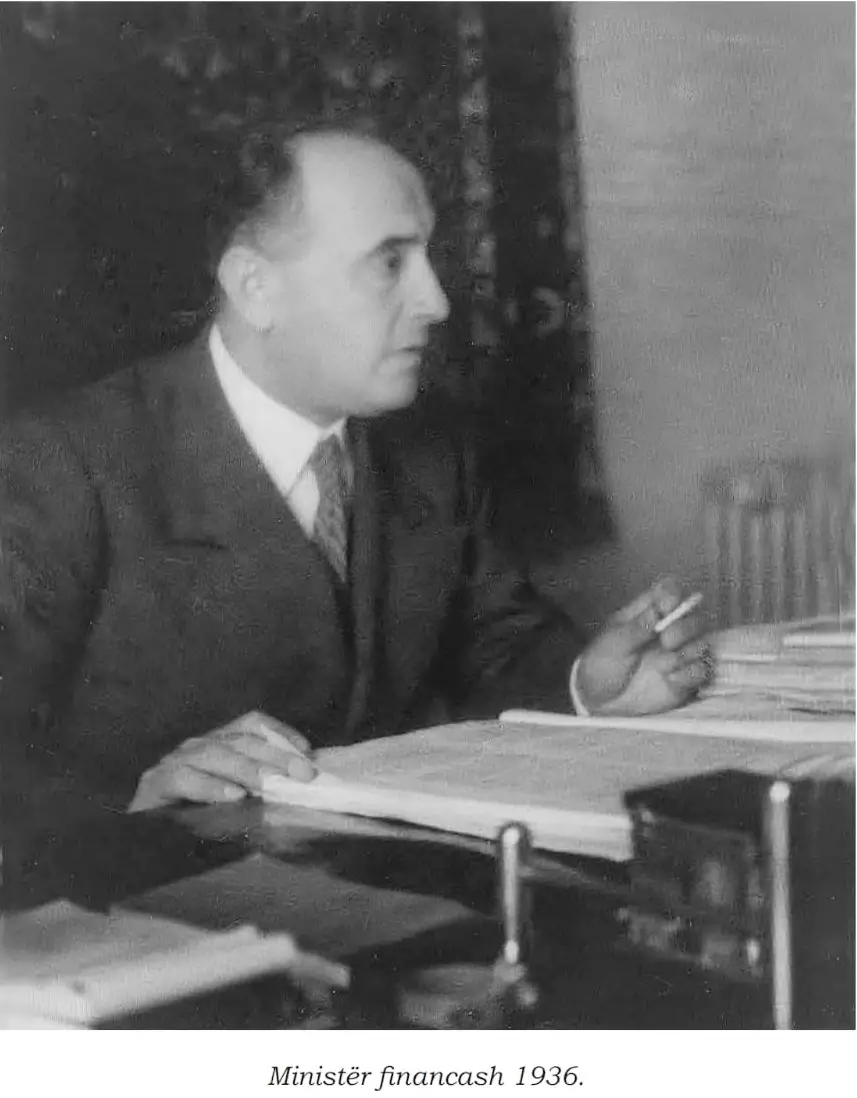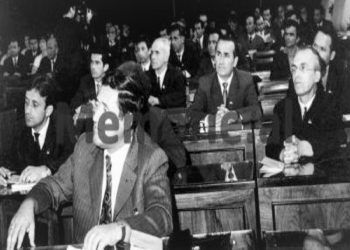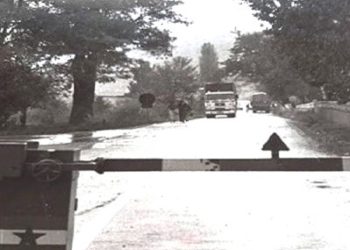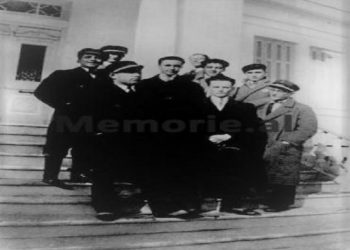By Arben Pustina
The fourth part
– Rrok Gera, a proper statesman –
FORWARD
Memorie.al / This book aims to convey to the public the image of a perfect man, who lived in other times, but who was the best example, not only of what an ordinary man can represent, but, next first, as an example of a noble, distinguished, omniscient and, above all, honest statesman. Having in his genes the noble virtues of his origin, being formed as a personality in a wonderful environment, such as Shkodra at the beginning of the 20th century, and graduating from one of the most prestigious universities in Europe, such as that of In Vienna, Rrok Gera had all the potential to be one of the important figures who gave rise to a rapid development through comprehensive reforms in Albania in the 30s of the last century.
This development reached its peak with Mehdi Frashër’s government, considered perhaps the best Albanian government of all time, formed for the most part by non-political persons, among who was Rrok Gera. For 10 years, or more, as a minister or in other high state functions, he worked with conviction that he was walking on the right path for the consolidation of the Albanian state, a process for which he said he had no time to lose. Economist, financier, diplomat, lawyer, Gera was a specialist who advanced towards the top with his professionalism in an environment where the old factions, which were almost dominant in politics and governance, lost ground in front of young and educated people good.
Continues from last issue
RETURN TO ALBANIA AND ACTIVATION IN THE STATE ADMINISTRATION
On September 5, 1934, the Secretary General of the Ministry of Finance, Rrok Gera, sent a letter to the head of the Central Bank of Albania, Gaudenzi, attaching the scheme of the agreement between the Albanian government and the Bank, drawn up by him, for coinage of silver and bronze. The scheme in question infuriated the Italian official of the BKSh, so much so that he wrote to Gambino that he had verbally declared to Gera that this scheme could not even be discussed. While the negotiations on the coinage issue continued, the lack of coins in circulation within the country had become significant, so much so that, at the instigation of Rrok Gera, the Minister of Finance, Dibra, wrote to the leaders of the National Bank of Greece, to take measures immediately.
On December 12, Gaudenzi proposed to Gera that the coniation should have a limit of 500,000 fr. gold, while suggesting that the parties involved in the negotiations for so long, give up something of their positions, in order to reach an agreement, which, in fact, was signed on March 1, 1935. The agreement based on the law of July 3, 1925, provided for the coinage of silver coins in the value of 1 million fr. gold, with 700,000 coins of 1 fr. gold and 150,000 coins of 2 fr. gold. From the profits from this coniation, the Albanian government immediately benefited from the forfeit, an amount of 450,000 fr. gold. So, finally, in the face of the persistence of the Albanian side, the Italian leaders of the BKSh were forced to withdraw and we can say that Rrok Gera, as a protagonist in these negotiations, scored a success in his activity.
It seems that the Italians estimated that it was necessary to sometimes put financial interests in the background “for the sake of a realistic and more general vision of the situation”, so they accepted the agreement with the Albanian government. However, the Italian leaders of the National Bank of Ukraine intended to push the process even further, forcing the Minister of Finance Dibra, on 19.07.1935, to address them with telegram no. 86/14, which drew attention to the fact that, based on the statements of the leaders of the National Bank of Ukraine, the Ministry of Finance had announced to the public that in July, the divisional silver coins would be put into circulation, but this had not happened yet, so it was requested taking immediate action.
It seems that the telegram had its effect, so based on the agreement reached and the authorizing law of March 27, 1935, on August 5, with the help of the National Bank, 700,000 pieces of silver coins from one fr. gold, 150,000 silver coins of two fr. gold, about 100,000 fr. gold in bronze coins from Fr. gold 0.02 each piece and about fr. gold 50,000 in bronze coins from fr. gold 0.01 each piece. Even later, in 1937, based on the decree authorizing the law of June 30 of the same year, an amount of 600,000 silver coins from one gold franc was put into circulation.57 The putting into circulation of coins of this type was an action that, as Gera himself later claimed in a debate in Parliament, it would bring great income to the state treasury.
Even according to a publication of the League of Nations on the finances of Albania in the years 1928-1936, it is confirmed that the launch of new silver coins on the market caused the Albanian state to receive an annual profit of no less than 450,000 gold francs. As we said, another measure considered by the Albanian government in 1933-1934, in order to benefit from financial resources, was receiving money in the form of advances from large foreign or Albanian companies. One of them was the Italian company A.G.I.P., which had a fuel monopoly in Albania.
But the company in question was the target of controls by the Albanian authorities long before the years 1933-1934. First, we have a report of the General Secretary of the Ministry of Finance, Gera, dated March 25, 1931, “On the tax-profit of the company of A.G.I.P. in Albania”, addressed to the Minister of Finance, where he suggested that the Italian company pay the Albanian state additional obligations for the past two years.
This after a study done by him for the 5-month period; (August 1, 1929 to December 31, 1929) where the prices offered by A.G.I.P. in Romania were also compared, it turned out that the company had significant profits, since fuel consumption in Albania was increasing day by day: “…If we take into account that the profit from fr. 326,000 gold was realized in 5 months, and if you take into account that the consumption of fuel (gasoline) has increased a lot, then it turns out that the profits realized in 1930, 1931, exceed a million per year, so according to our point of view , “Agipi” must pay taxes for 1929, 1930 and 1931, fr. 280,000 gold”.
In his conclusions, Gera also noted that A.G.I.P. should provide the balances of its activity on the basis of original and detailed invoices, as well as warn that in case of irregularities, the Italian company would have consequences: “I am of the opinion that Agip should be notified with a letter to be detailed, I brought the original documents here, and kept the books with balances and accounts loss and profit in Albania, and after completing them, select two very capable officials to carry out a revision, to warn Agip that the discovery of irregularities with the purpose of increasing profits, have severe penalties”.
These were the words with which Rrok Gera closed his report on the obligations of the Italian company, whose leaders, according to the historical documents of A.G.I.P., complained excessively about the treatment given to them by the Albanian authorities, in general, and the Ministry of Finance together with the Secretary its General, in particular. Meanwhile, in a letter addressed to the Italian Foreign Minister, Grandi, on March 3, 1931, the president of A.G.I.P., Alfredo Giarratana, described the attitude of the Albanian authorities as a continuous sabotage against everything that had to do with the company he was leading: ” …we suffer every day the strangest and most absurd attitudes related to the determination of prices and technical controls on the part of the Albanian bodies, and this naturally brings a crushing economic effect and contributes to the increase of our losses”.
In fact, the “troubles” of A.G.I.P. had not yet begun. In May 1933, the General Secretary of the Ministry of Finance, Rrok Gera, held talks with the former director of A.G.I.P., Bilucaglia, as well as with the then director of the company, Conte della Zonca, about the possibility of obtaining a loan in form of advance, on the fuel tax, but under the condition that such an advance was amortized over a long period of time, through a part of the monthly installments that the company had to pay.
But the Italian side procrastinated the issue, while also seeking the opinion of the Italian Foreign Ministry, where the director for political affairs in this Ministry, Gino Buti, in a note to Deputy Secretary Suvich, wrote on June 22, 1933, that: “. ..the Albanian government’s request aimed to benefit in different ways from the missing financial aid from the Italian government”.
Further, Buti instructed A.G.I.P. not to give a “no” to this request, but with pretexts of a technical nature and with requests for more details, to actually remain waiting, until Rome and Tirana clarify the financial aspects between them. But Gera was not discouraged at all. In November 1933, he repeated the request to the general director of A.G.I.P., Carafa d’Andria, on the occasion of his visit to Albania, together with Inspector Kovacs.
The discussions were designed to determine the amount to which this advance could go, on the eventual interest and on the time of its amortization. Also, it was discussed about setting a lump sum for the profit tax, adjusting the tax-profit certified until that period, adjusting the loading-unloading tax, adjusting the fuel characteristics, etc.
About the fuel tax advance, Gera and della Zonca also discussed during the month of December and following this, the director of A.G.I.P., informed that for the request of the Albanian authorities, he had requested instructions from the society’s center in Rome. In one of his memos, Rrok Gera emphasized that, regarding the issues discussed in these meetings, he was authorized to communicate to della Zonca, the basic points on which an agreement could be reached and which specifically were: A.G.I.P., gave the Ministry of Finance an advance of fr. 1,500,000 gold, with an annual interest of 4%, amortizable within 10 years, to be repaid with fuel income and monthly installments. A.G.I.P., would also give the Ministry of Finance the amount of 500,000 fr. gold, without interest, that would be redeemed with the tax-profit of the years within the period that would be redeemed.
For its part, the Ministry of Finance would cancel the taxes assigned to the company, which belonged to the years 1929, 1930 and 1931, with an amount of fr. gold 243,918 and meanwhile, this Ministry would make the taxes of A.G.I.P. to the state, to be confiscated for ten years. At the end of the discussions and the verbal agreement, the negotiating parties managed to sign, on March 14, 1934, a final agreement, where the Ministry of Finance undertook the legal approval of the addendum to the contract of July 17, 1929 with A.G.I.P., for the fuel monopoly and canceled the recognized taxes for the years 1929, 1930, 1931 and 1932, fixing in exchange for these taxes, the sum of fr. gold 120,000. For 1933, the company would pay a profit tax of about 50,000 fr. gold, much of this determined no longer on the basis of the company’s balance sheets, but on the basis of the volume of fuel sold by it.
According to the agreement reached, A.G.I.P. accepted this type of taxation, provided that no other type of tax was imposed on it. Likewise, the Italian fuel company granted the Ministry of Finance an advance of fr. 200,000 gold, as tax deductions for the years 1934-1938. So, according to the agreement, A.G.I.P. would immediately pay the Albanian state a significant amount of about 370 thousand fr. gold, as an advance for the period 1934-1938. As in 1933, the company’s obligations for this time period were no longer calculated on the basis of its balance sheets and accounting controls, but on the basis of a fixed tax for each quintal of fuel sold.
In a document with no. 124/80, dated 15.03.1934, the General Secretary of the Ministry of Finance, Gera, clarified the Council of Ministers regarding the details of this agreement as well as the reasons that led to the need for its negotiation. According to this document, for the period 1929-1931, the company declared losses, which it had recorded in the assets of the balance sheet as an amount to be amortized with the profits of the following years and, as an example of this, was its profit of 250,000 Fr. gold in 1932, which A.G.I.P., had accounted for amortization of previous losses. Faced with these actions, Rrok Gera announced that the Ministry of Finance had notified A.G.I.P. that, it could not make a complete cancellation of the certified taxes for 1929-1932 and that the Ministry could not accept that the profits of the following years would not be taxed with the justification that they would be used to amortize the previous losses.
In the document addressed to the Council of Ministers, Gera emphasized that the agreement was considered favorable, since the state would receive from A.G.I.P. Fr. 170,000 gold for the period 1929-1933 (a lot of which the company had no intention of paying) as well as the amount of 200,000 fr. gold in the form of an advance from future tax-profits, to be repaid in 5 years, without interest. The agreement defined as tax quota fr. gold 0.70 for each net quintal sold: kerosene, gasoline, etc., while for each net quintal sold gasoil, diesel, fuel oil and unrefined kerosene, a tax of fr. gold 0.35.71
According to the General Secretary of the Ministry of Finance, the agreement with A.G.I.P. had another advantage for the Albanian financial authorities, as they could increase the fuel tax up to 20%, without the opposition of the Italian fuel company. In order to complete the legal framework related to this agreement reached on March 14, 1934, the Parliament approved two days later (that is, on March 16), the law “On the forfeiture of the Agip Company’s profit tax”. According to the historical notes of A.G.I.P., despite the achievement of the aforementioned agreement, even in the subsequent period, the Italian society continued to feel the fear of any “aggressive” action against it by the officials of the Ministry of Finance.
Returning the headache to the leaders of the A.G.I.P., in the spring of 1938, the Albanian government renewed the agreement of March 14, demanding and receiving again from the A.G.I.P., a sum of fr. gold. 250,000, as an advance tax-profit for the years 1938, 1939 and 1940.74 For everything we said here regarding the relations of the Albanian authorities with the fuel company A.G.I.P., Rrok Gera was very active and this emerges from numerous documents, which are in the form of notes, calculations, proposals, memoranda, or agreements drawn up by him, despite the fact that some of them had the signature of the Minister of Finance. Also, the same thing emerges from the historical documents of A.G.I.P., where sometimes Gera was even accused by society officials of deliberately exaggerating, a sign that he really gave them a headache.
So, at the end of the efforts of the Albanian government to somehow meet its financial needs in the years 1933-1934, we can say that something was achieved and that what was achieved was the maximum that could be done under the circumstances of that time. What the Italians of the BKSh accepted regarding the concession and the unpaid tax payments by A.G.I.P., actually came after strong pressures from the Albanian side. Rrok Gera showed so much zeal in his activity while opposing the Italian interests in Albania, (A.G.I.P. is an example of this) that there was a case, that representatives of large companies active in our country thought that the General Secretary of the Ministry of Finance deliberately pressured them, for personal gain.
This can only be taken as a false or ridiculous claim, for until he left the country, in April 1939, he had no property of any kind. Although he was in charge of finances and the Albanian economy for about 10 years, Rrok Gera did not have his own house and lived on rent, in the house of the Kokonajs, in Tirana. Memorie.al
The next issue follows






